
What is it?
A collaboration between new world guitar builders Orangewood and one-man band Treetone Guitars, the Del Sol Baritone guitar takes the latter's popular offset design and adds a chambered body and extended scale length into the equation.
On one side, we have a guitar built by a team that typically crafts acoustic guitars. The Del Sol Baritone represents Orangewood's first proper foray into the world of electric guitars - albeit one that features a semi-hollow body - so it has some links to their more typical fare.
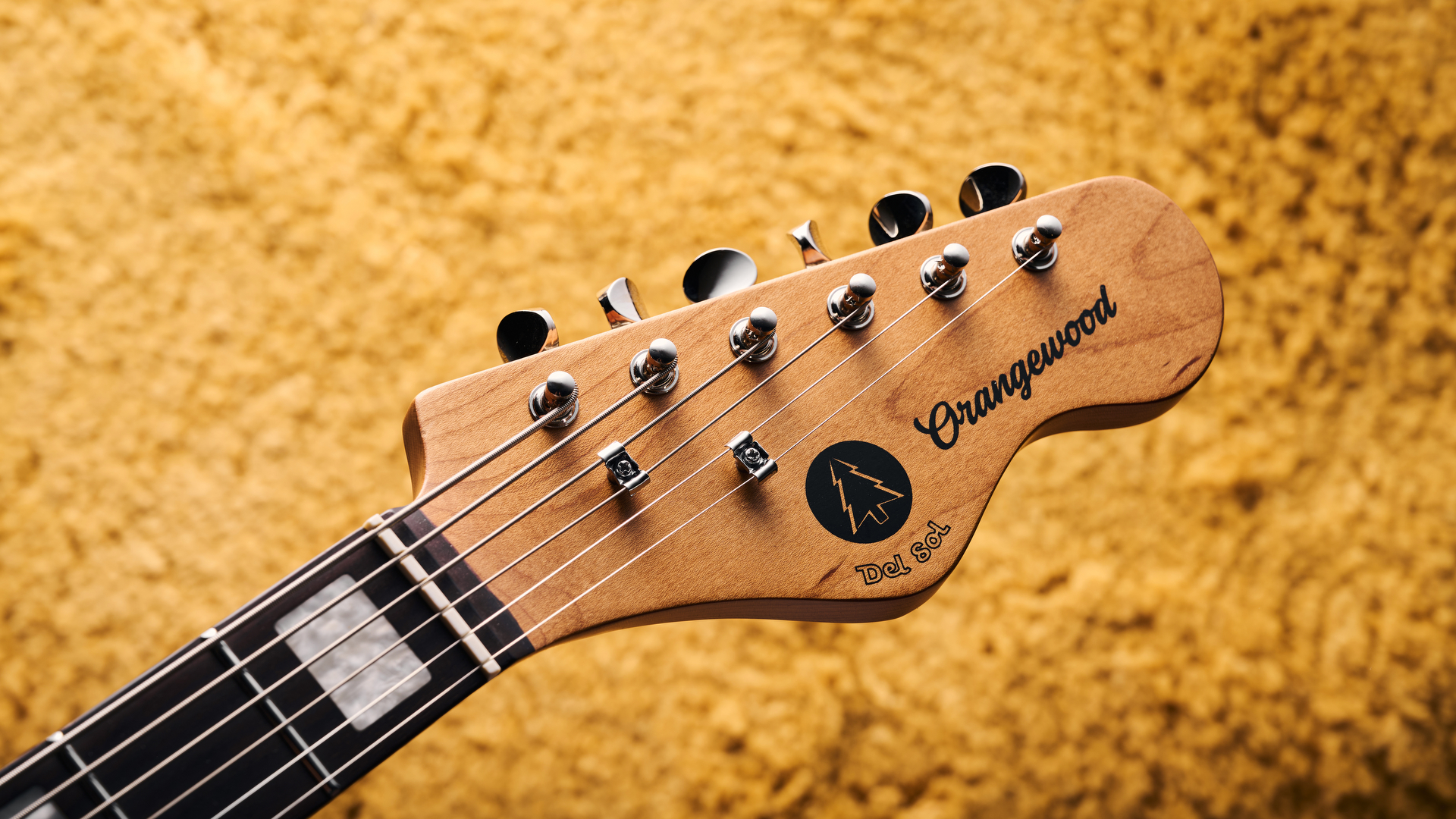
On the other hand, we have the '50s and '60s styling typical of Josh Forest at TreeTone Guitars. It represents an interesting coming together of different manufacturers that could well make for a heady collaboration.
The semi-hollow baritone is nothing new, with models from PRS, Danelectro, Hagstrom, and D’Angelico already available. At the very reasonable price point of $695, however, the Del Sol can definitely stake a claim to be one of the better value for money models on the market, provided the build and playability are up to scratch.
Specs
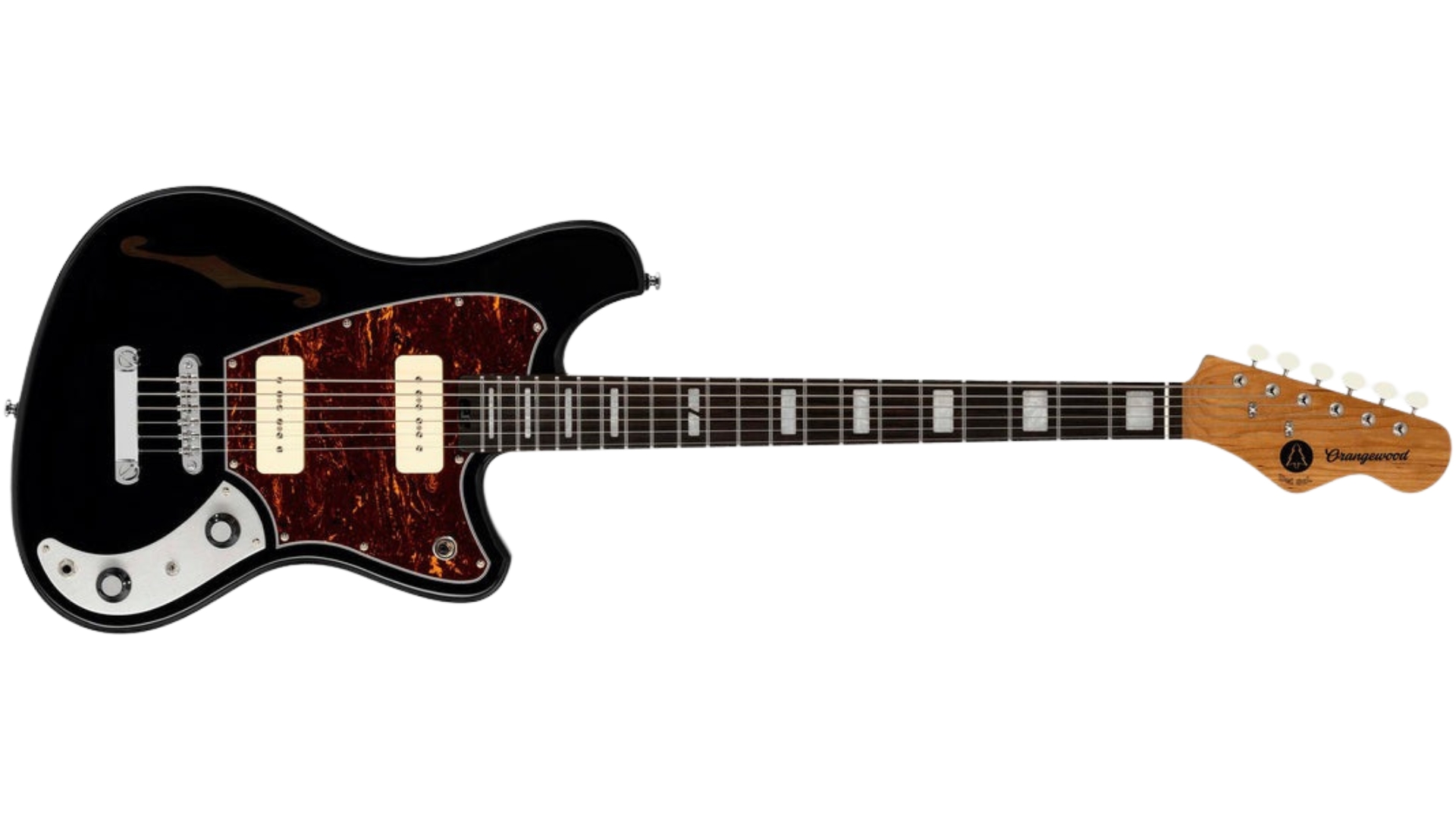
- Launch price: $695
- Made: Indonesia
- Type: Six-string baritone guitar with chambered body
- Body: Mahogany
- Neck: Roasted maple, ‘C’
- Fingerboard: Rosewood
- Scale length: 27.5” (698.5mm)
- Nut/width: TUSQ, 43mm
- Frets: 21 jumbo frets
- Hardware: Gotoh Roto Grip locking tuners
- String spacing at bridge: 50.4mm
- Electrics: 2x P90 pickups, 1x master volume, 1x master tone, three-way toggle selector, mini toggle phase switch
- Weight: 7.6lbs (3.44kgs)
- Left-handed options: No
- Finishes: Pitch Black (as reviewed), Sandstone
- Case: Soft gig bag
- Contact: Orangewood
Build quality

Build quality rating: ★★★★½
It’s a 27.5-inch scale that comes tuned to B-standard out of the box, and the body is crafted from mahogany with an F-hole on the bass side. My review model came in glossy pitch black with a tortoise pickguard and a brushed metal control plate, but if you don’t fancy the upkeep of glossy black and the inevitable fingerprints it can pick up, you can also get it in a brown/gold sandstone color with a white scratchplate.
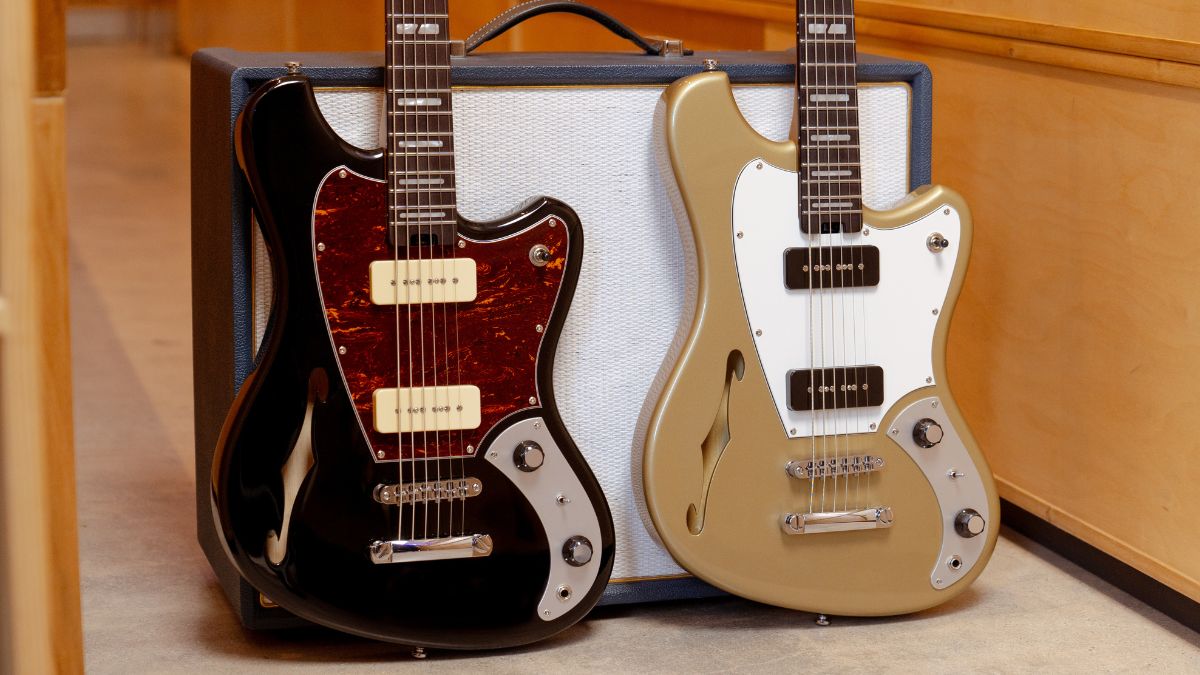
The finish is beautifully applied throughout, although I do spot a bit of missing paint on the inside of the F-hole when I perform my close inspection of it. It’s the only thing I can see that’s out of place in terms of the look, with everything else flawlessly finished.
The neck is a combo of roasted maple and rosewood fingerboard with a flat, 12-inch radius. Block inlays guide the way across the dark wood, which features jumbo frets to ensure good intonation with those wide gauge strings. Again there are no sharp edges present, and the edges are well finished with no gaps visible where the frets have been put into the neck.
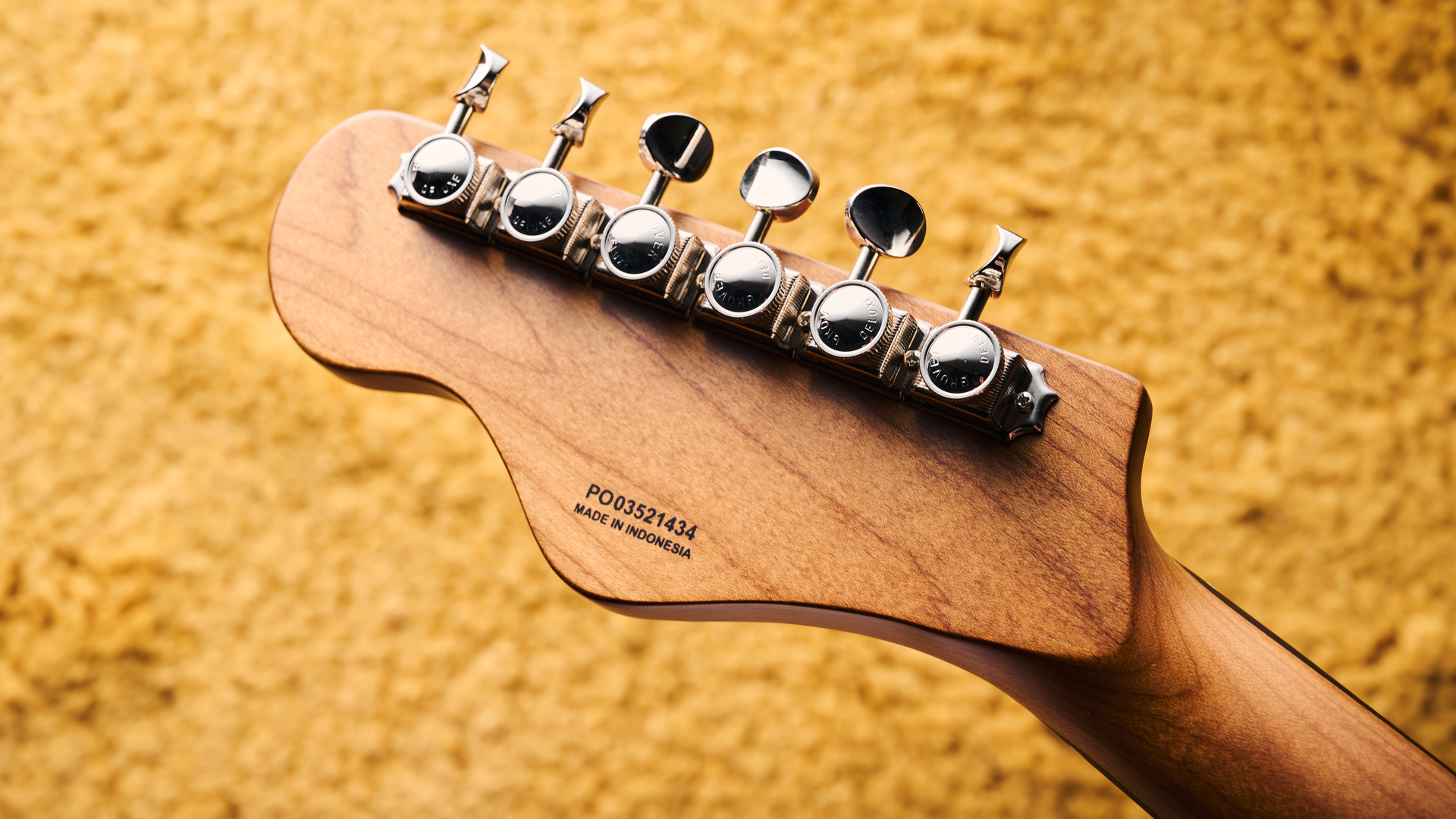
The TUSQ nut is 43mm wide, which is typical of what you’d find on a standard electric guitar. This should help with the playing feel for those coming from a standard scale instrument. On the headstock, I spy a set of Gotoh Roto-Grip vintage-style locking tuners for quick string changes and improved stability. At the opposite end, it’s a tune-o-matic bridge with a stop tailpiece.
The electronics come in the form of two P-90 pickups, which have cream covers on my review model. The selector toggle switch gives you the typical three-way selection, but you’ve also got a mini toggle switch that sets the pickups to out of phase when you’re in the middle position. Two control knobs handle volume and tone for both pickups, with large knobs that feel well applied and easy to manipulate.
Playability
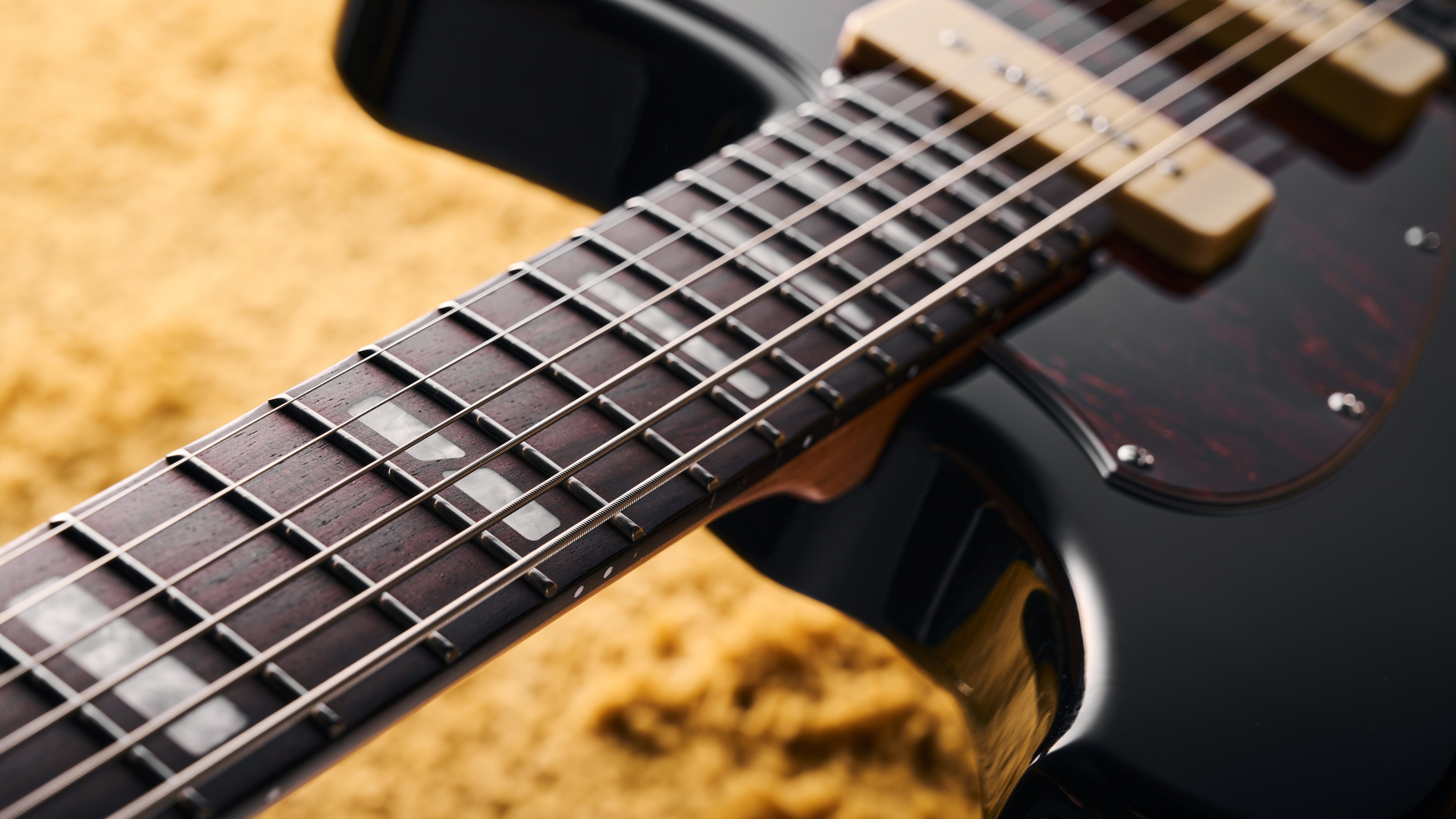
Playability rating: ★★★★½
It’s not hard to play per se, just different
If you’ve never played a baritone guitar before, then moving over to one can feel difficult, particularly with longer scale lengths. The 27.5-inch here doesn’t feel as ginormous as when I bought my metal-oriented 29-inch scale baritone, so sitting down to record some tones into my audio interface, I don’t find it too tough to adapt to the slightly larger spaces between the frets. I do reach for a thicker guitar pick to get more control over those fat guitar strings though (the guitar ships with an Ernie Ball 6-String Baritone Slinky 13-72 set).
At the nut, I land open chords with ease and only a slight adjustment in technique. Adding in extensions while I’m arpeggiating does give me some trouble at first due to the extra stretching required to prevent muting the open strings, but it’s something I can work my way through. Those jumbo frets are very much welcome here, giving a good, strong platform to play against, which is needed with the thickness of the strings.
Moving further up the fingerboard, I find the playability equally good. It sits in a sometimes unfamiliar space between electric guitar and bass guitar, at times feeling like one or the other depending on what I’m trying to do. It’s not hard to play, per se, just different.
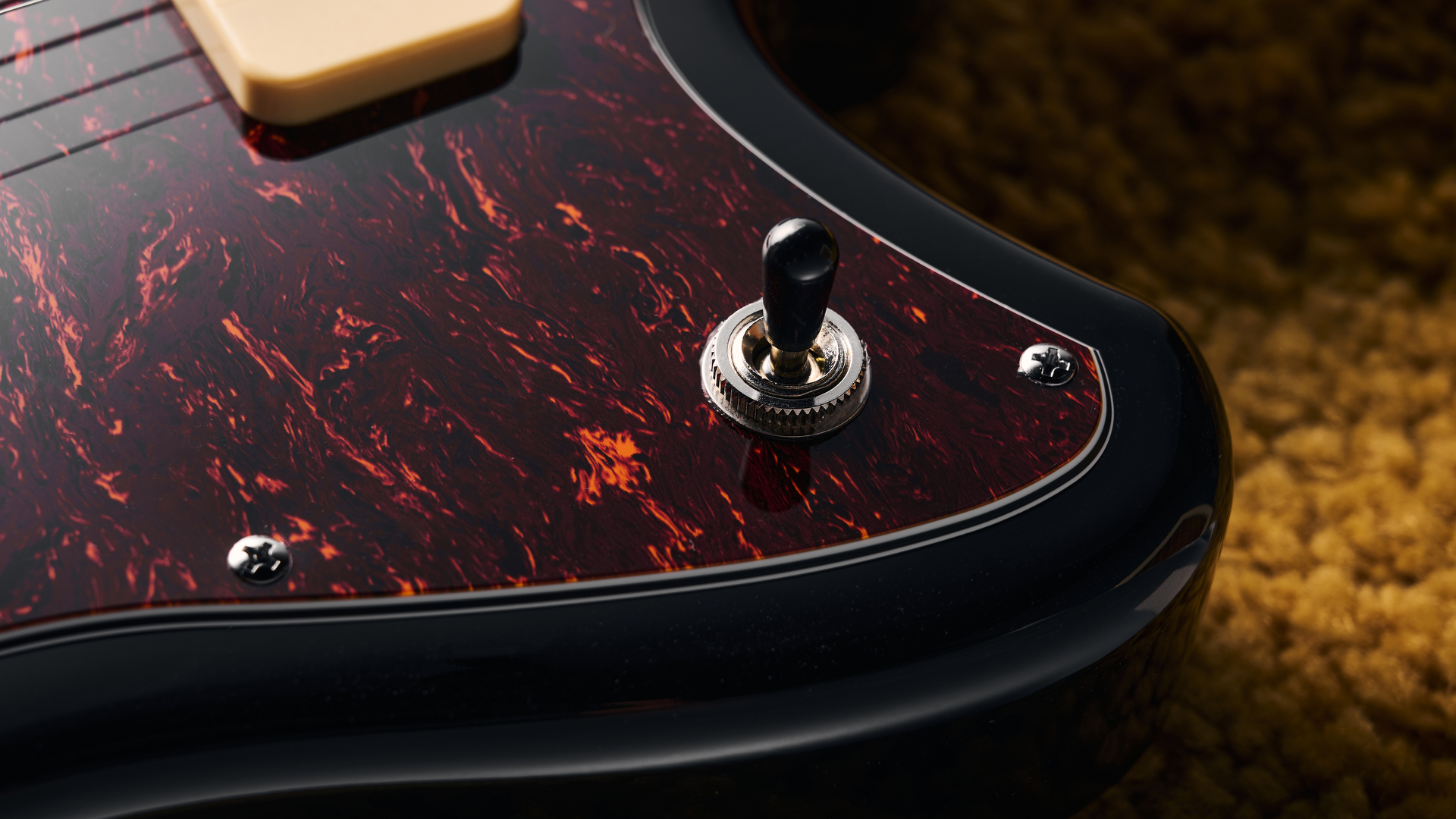
There’s an adjustment to be made when it comes to bending, though, as I need a lot more force than a regular guitar. A supporting finger or two comes in handy here, but it’s not as smooth or intuitive as the feel of my number one guitar. This is down to the fact that it’s a baritone rather than anything to do with the playability of the neck or layout of the build.
Ditching the pick and moving to fingerstyle, I have great fun sliding up and down the neck with some Les Claypool-inspired tritones
Ditching the pick and moving to fingerstyle, I have great fun sliding up and down the neck with some Les Claypool-inspired tritones. There’s a distinctly bass-like feel you can get from the Del Sol when you play with your fingers, and I even nail some slap textures in there using my thumb, that extra thickness of the strings giving some Satisfying pop when I knuckle them.
Whilst I’m playing seated at the desk of my home studio, I do run into one problem that keeps interrupting my playing. Every time I lean forward to grab my mouse and change a setting, or bend down to get to my pedalboard, I find myself inadvertently knocking the pickup selector into the neck position. It’s a small thing, but I do end up wishing it was further out of the way, particularly when I'm laying down multiple takes whilst recording a demo for my band.
Sounds

Sounds rating: ★★★★½
Playing the guitar unplugged, it’s resonant but obviously not quite as resonant-feeling as a full hollow body. When playing open chords, I can feel the low end vibrating against my rib cage, and while there’s a definite airiness to the quality of the tone I get whilst playing it unplugged, I don’t see myself or others playing it that way for an extended period of time.
It sounds incredibly full, with the P-90s offering a nice balance between single coil twang and humbucker heft
To test the sounds properly, I wait til my next band practice, where I can fully unleash the Del Sol through my Orange tube amp at volume. Playing clean with the bridge pickup engaged, I find it’s very articulate with lots of mid-range body as a result of the low tuning and chambered body. It sounds incredibly full, with the P-90s offering a nice balance between single coil twang and humbucker heft.
In the neck position, it’s a lot more bass-heavy but without ever feeling overpowering in the low end. I’m pleasantly surprised by how articulate it is, having experienced some muddiness with other baritones here. The P-90s are well voiced for the guitar, and the chambered body gives everything a lovely, airy lift that makes it feel really articulate.

Beautifully captures the low-end boom with the more articulate twang of the highs
Switching to the middle position ends up being my favorite tone, though, giving a super fat sound that beautifully captures the low-end boom with the more articulate twang of the highs. It’s amazingly versatile and for me just sits perfectly between the two ends of the scale that the instrument is capable of, sounding great no matter what kind of playing I’m doing.
Engaging the phase switch gives me that strangled, quacky tone that sounds a bit anaemic on its own, but once you use it in a band mix with other instruments really comes to life. Flicking it on for some lead lines with my band gives me a cutting sound, and I find it blends nicely with the other guitar in my group when we are both playing a similar part.
Moving to more gainy sounds, that inherent articulation is still present, and again, the Del Sol surprised me with how clear and responsive the pickups remain once I start adding in multiple gain stages. There’s a crispiness to the pickups that comes through when you start digging in that’s really gratifying, and even with a decent dollop of overdrive and playing open chords near the nut I can hear every note.
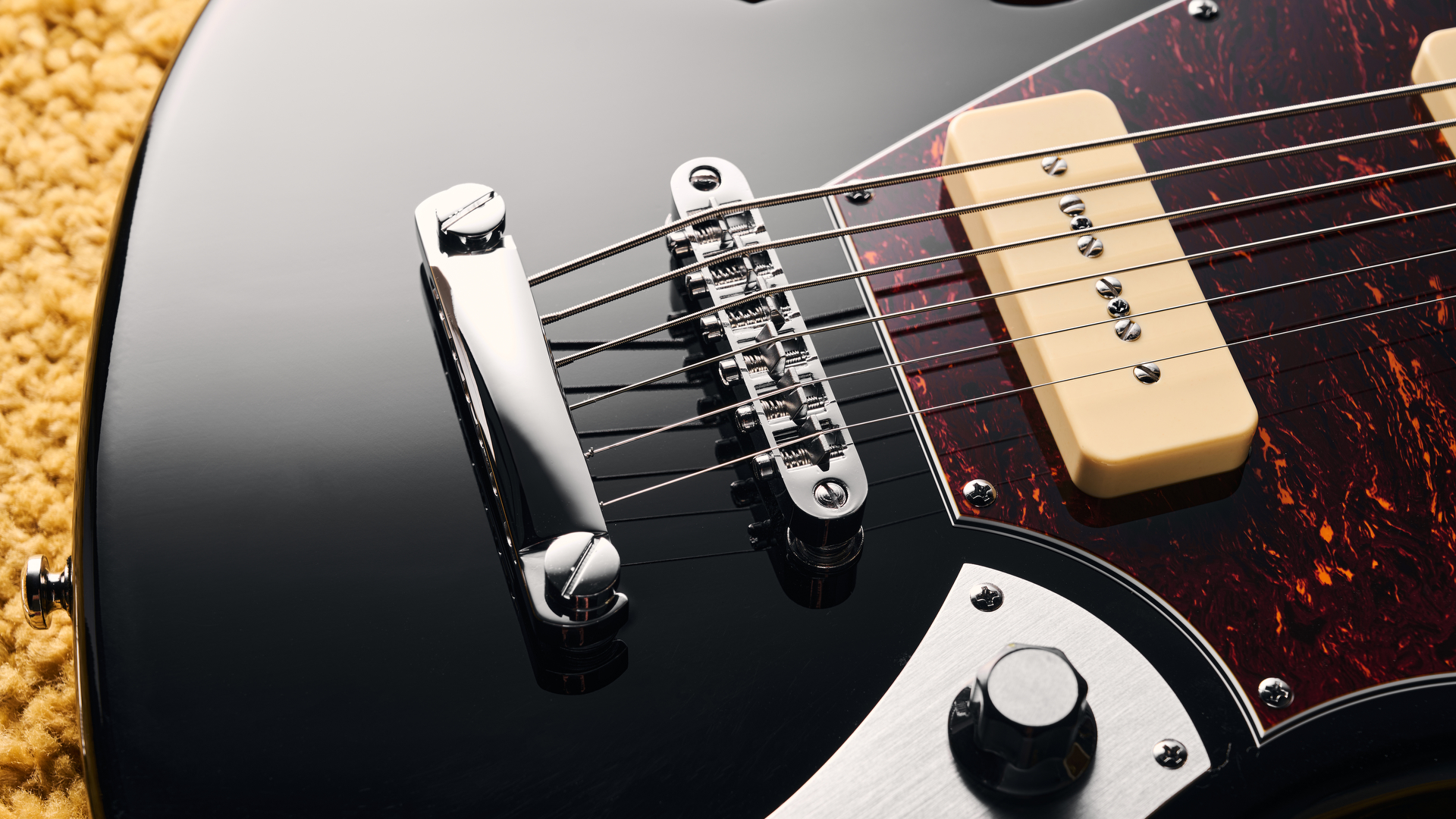
From post-punk attitude to noise rock acrobatics it reacts brilliantly. No matter what pickup I select, I find little trace of mud, just oodles of clarity that keeps jamming with my band for hours. It’s got a really powerful voice that never feels too hyped on the low end, but still carries plenty of punchiness and an overarching sense of body to the sound.
Moving up from mid-gain, I finally find a weakness. Getting into metal levels of distortion, the pickups retain their clarity, but here the noise starts to creep in. It’ll still do the job if you're very accurate with your playing and set the noise gate right, but it’s incredibly difficult to get the precision required for modern metal guitar sounds, and that’s okay. It’s a chambered guitar with P-90s that’s clearly not designed for such purposes, so I can easily forgive it one chink in the armour.
Verdict
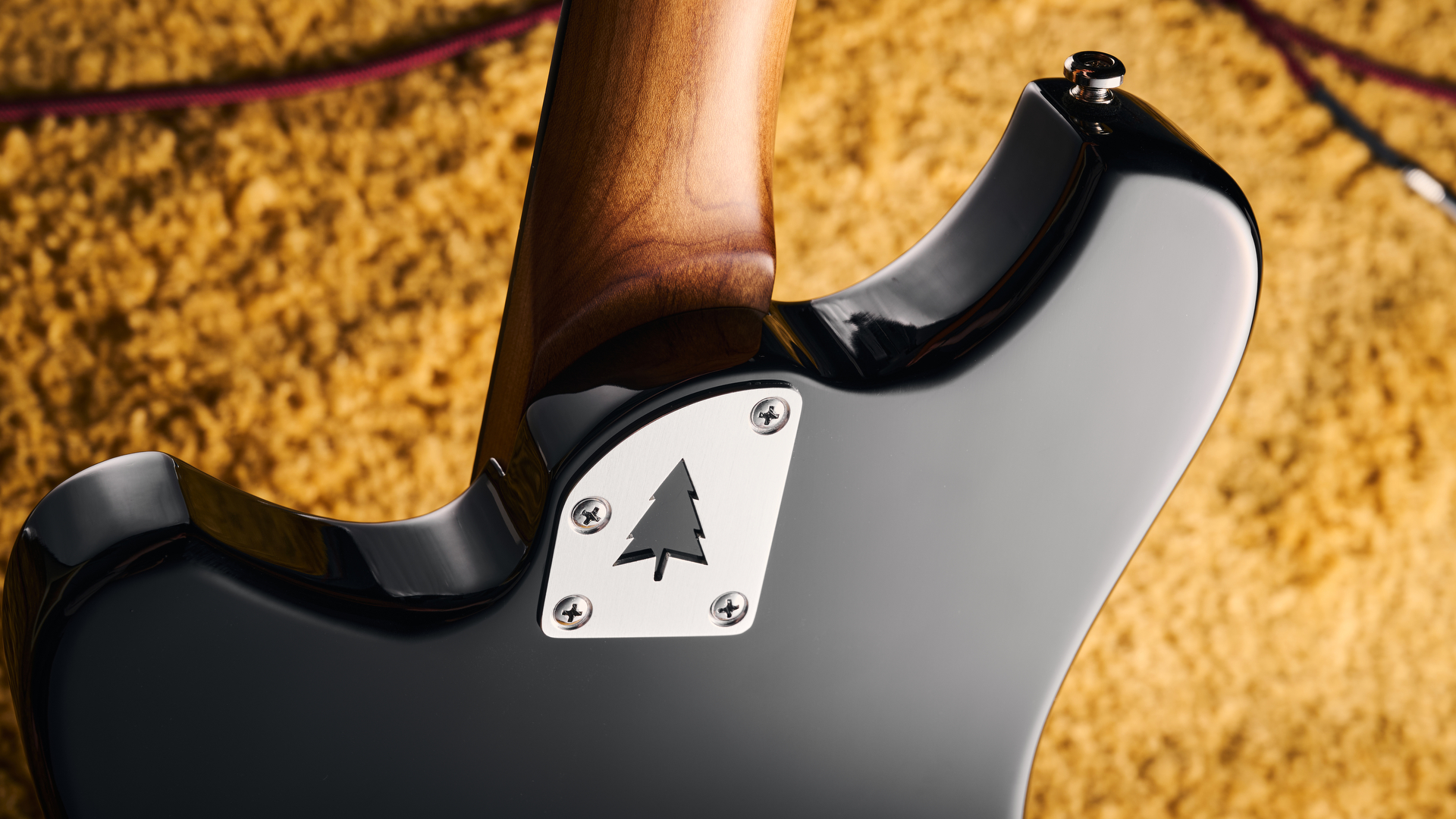
Moving to a baritone can come with teething problems, but the Del Sol allowed me to flow effortlessly into the longer scale without ever feeling like it was holding me back. ,
The Orangewood Del Sol Baritone is a really well put-together guitar that for me is superb value for money. The quality of the build is second to none and for the price, I was very surprised at just how nice it looks and plays. Moving to a baritone can come with teething problems, but the Del Sol allowed me to flow effortlessly into the longer scale without ever feeling like it was holding me back.
The pickups are similarly fantastic, excelling at everything but the heaviest of metal. The articulation across all the positions makes it a versatile beast indeed, and the addition of the phase switch in the middle position is the icing on a cake that will suit the tastes of a lot of guitar players.
Guitar World verdict: Combining cleverly voiced pickups with the low-end oomph of a baritone and the airy quality of a chambered body, the Orangewood Del Sol Baritone is a masterstroke of guitar design, and one of the most versatile baritone guitars I’ve ever played. No, it won’t do super low-tuned chugging, but for fans of everything else, it just might be the affordable entry point you need to delve into the depths of a less-usual guitar.
Test |
Results |
Score |
|---|---|---|
Build quality |
Superbly put together with only a couple of tiny niggles |
★★★★½ |
Playability |
Surprisingly easy to get to grips with, considering the scale length |
★★★★½ |
Sounds |
Incredibly versatile and articulate pickups can cover a lot of ground |
★★★★½ |
Overall |
A brilliant baritone that can handle anything apart from modern metal |
★★★★½ |







